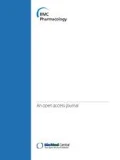Background
BAY 60-4552 is a direct soluble guanylate cyclase (sGC) stimulator that acts independently of nitric oxide (NO). In preclinical studies BAY 60-4552 exhibited potent vasorelaxing properties and end-organ protective effects. Secondary pulmonary hypertension is a determinant of morbidity and mortality in patients with biventricular heart failure (bivHF). Weassumed that BAY 60-4552 would improve cardiopulmonary hemodynamics by restoring functionality of the NO/sGC/cGMP pathway and be well tolerated in patients with bivHF.
Methods
This study evaluated safety, tolerability and invasive hemodynamics of 1, 2.5, 5, 7.5 and 10 mg oral BAY 60-4552 in patients with bivHF (LVEF ≤ 45%, mean pulmonary artery pressure (mPAP) ≥ 25 mmHg, pulmonary capillary wedge pressure [PCWP] ≥ 18 mmHg).
Results
31 male and 11 female patients (65 ± 11 years; BMI 27.4 ± 4.4) were included. Mean hemodynamic parameters at baseline were PCWP: 23.9 ± 4.5 mmHg; right atrial pressure (RAP): 10.6 ± 4.3 mmHg; mPAP: 35.7 ± 8 mmHg; systolic blood pressure (SBP): 119.2 ± 17.4 mmHg; systemic vascular resistance (SVR): 1721 ± 534 dyn•s•cm-5; heart rate (HR): 70.6 ± 11.2 bpm; and cardiac index (CI): 1.99 ± 0.48 L/min/m2. Table 1 summarizes peak changes in invasive hemodynamics aftersingle dosesof 2.5, 7.5 and 10 mg. No relevant HR increase was observed. BAY 60-4552 was safe and well tolerated with mild adverse events (asymptomatic hypotension, n = 1; transient facial flushing, n = 5; mild headache, n = 4). Pharmakokinetic parameters were linear and mean elimination half-life ranged between 14 – 20 h.
Conclusion
In patients with bivHF, oral administration of BAY 60-4552 was well tolerated and mediated a potent vasodilation. Biventricular pre- and afterload were improved, which resulted in a significant increase in cardiac index. These first clinical results with an oral sGC stimulator in patients with bivHF demonstrate the potential of this new therapeutic principle.
Author information
Authors and Affiliations
Corresponding author
Rights and permissions
Open Access This article is published under license to BioMed Central Ltd. This is an Open Access article is distributed under the terms of the Creative Commons Attribution 2.0 International License (https://creativecommons.org/licenses/by/2.0), which permits unrestricted use, distribution, and reproduction in any medium, provided the original work is properly cited.
About this article
Cite this article
Mitrovic, V., Swidnicki, B., Ghofrani, A. et al. Acute hemodynamic response to single oral doses of BAY 60-4552, a soluble guanylate cyclase stimulator, in patients with biventricular heart failure. BMC Pharmacol 9 (Suppl 1), P51 (2009). https://doi.org/10.1186/1471-2210-9-S1-P51
Published:
DOI: https://doi.org/10.1186/1471-2210-9-S1-P51

